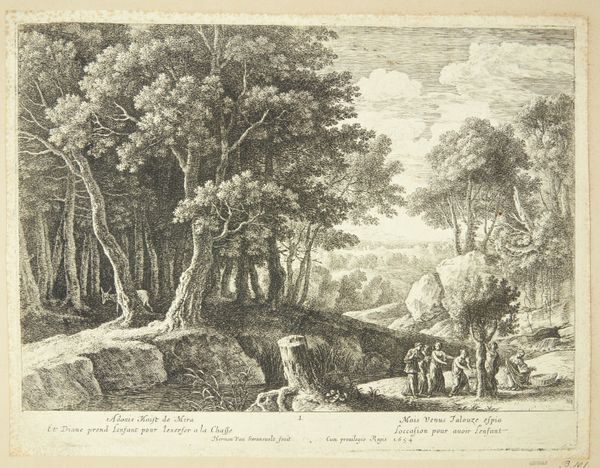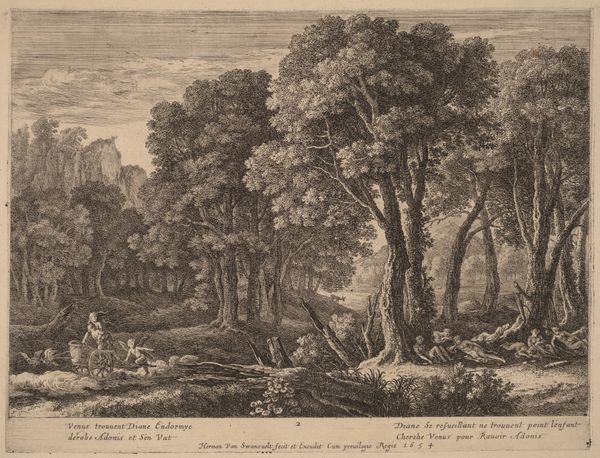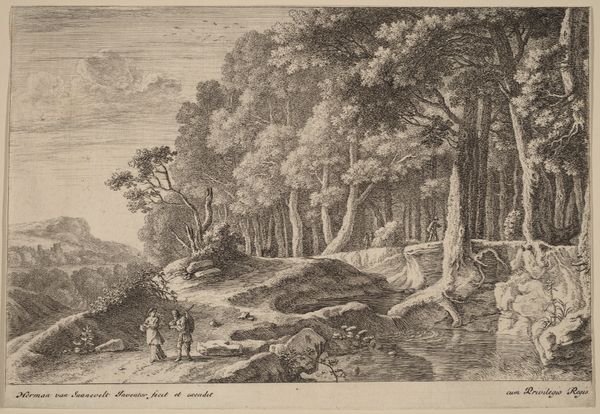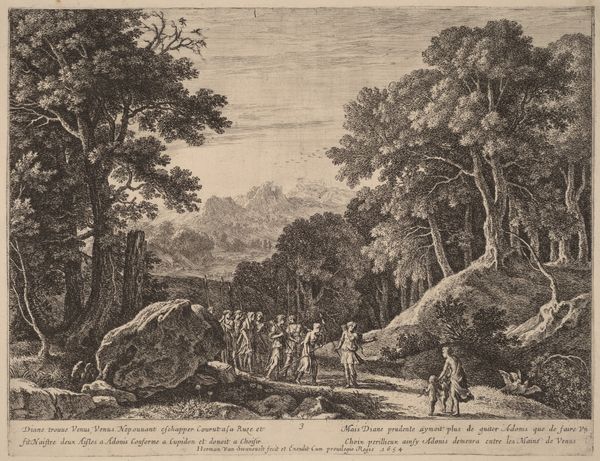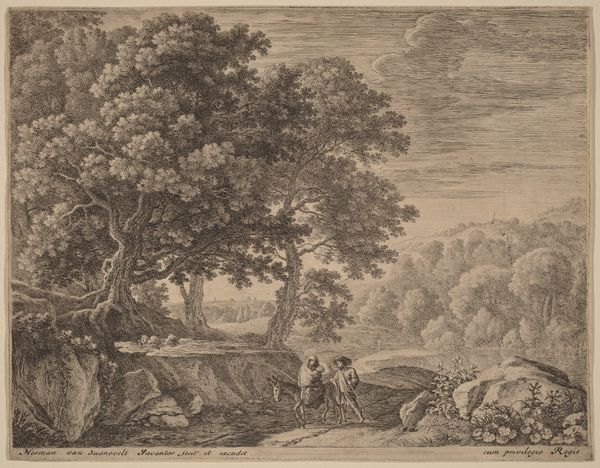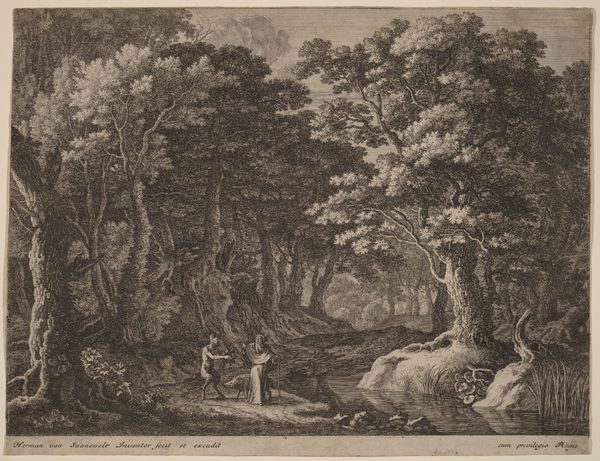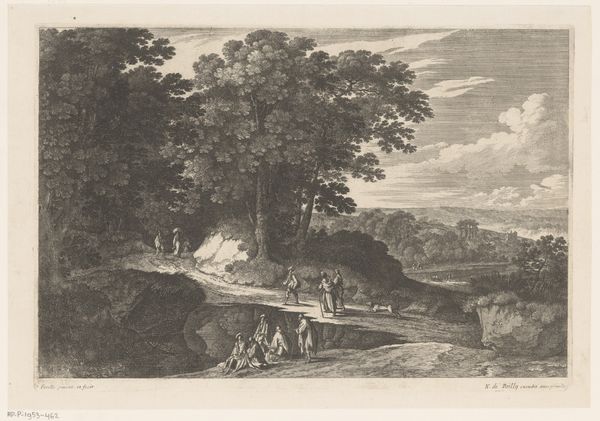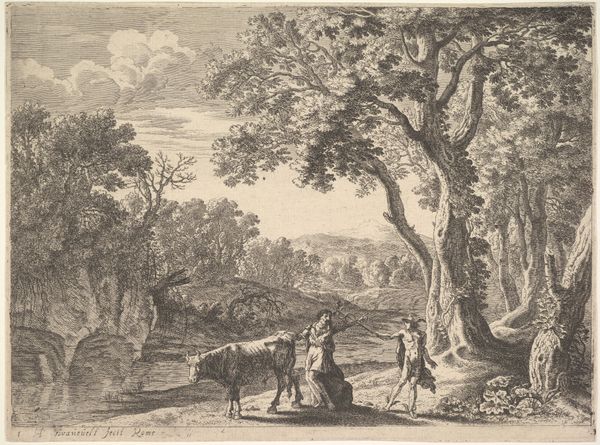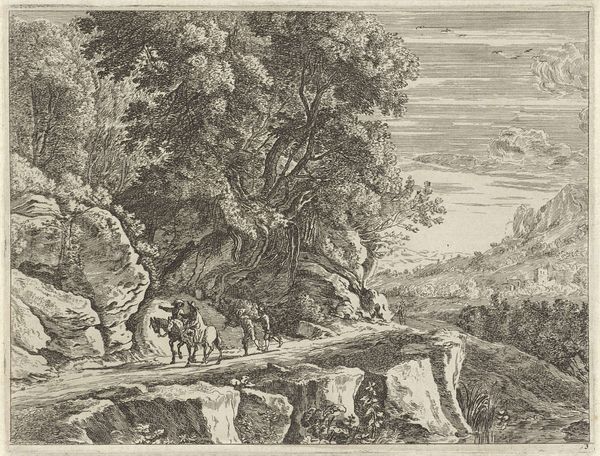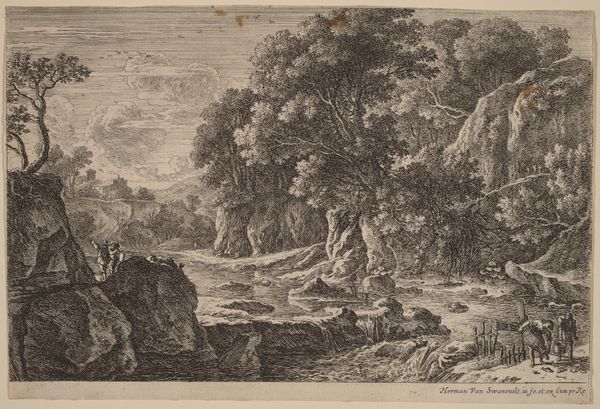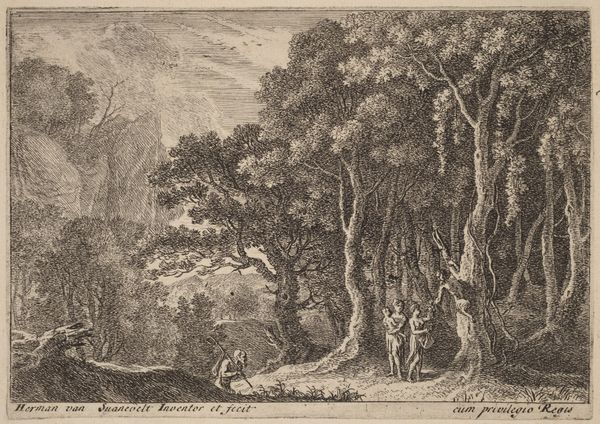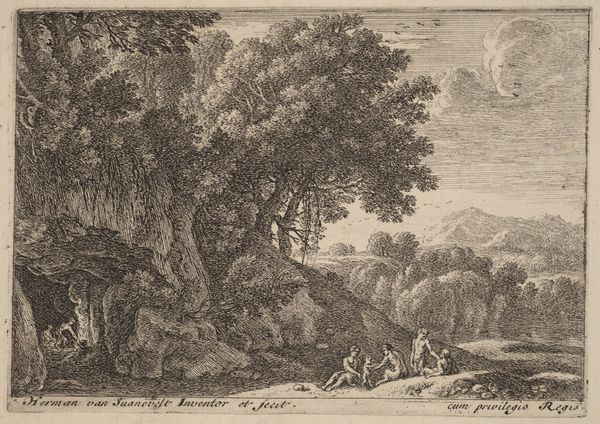
print, etching
#
baroque
# print
#
etching
#
old engraving style
#
landscape
#
history-painting
Copyright: National Gallery of Art: CC0 1.0
Editor: Here we have Herman van Swanevelt's "Birth of Adonis," an etching. It feels like a scene from a dream, this dark forest giving way to this bright scene in the distance, and I'm drawn to how tiny the figures seem within the vastness of the landscape. What catches your eye? Curator: The way the artist presents Diana entrusting the infant Adonis to the nymphs really speaks to the cultural memory embedded in mythological imagery. These weren't just stories; they were frameworks for understanding the world. The deer in the forest might refer to the wildness and the passions to come in Adonis' life. Editor: So, even the animals have significance? I hadn’t considered that. Curator: Absolutely! The deer is an age-old symbol associated with hunting, Artemis and, perhaps most importantly, primal instincts. Van Swanevelt uses landscape conventions to echo human dramas; in this print the symbols connect Adonis’ life cycle to the rhythms of nature, and this connection represents humankind's place within the natural world. Doesn’t this pairing—nature’s order with human drama—suggest the irresistible and all-consuming nature of fate? Editor: I guess so! I can see how Van Swanevelt is embedding all these symbols and that his intent really elevates the whole piece. It is far more meaningful and powerful than what initially meets the eye. I learned a lot, thanks! Curator: Indeed. It all brings into perspective that prints like these not only tell a story, but act as visual compendiums, referencing a wealth of cultural, historical, and psychological ideas.
Comments
No comments
Be the first to comment and join the conversation on the ultimate creative platform.
